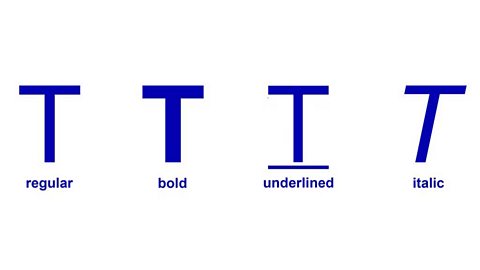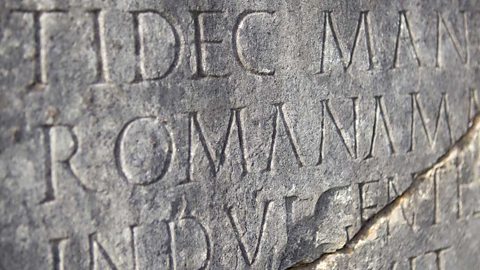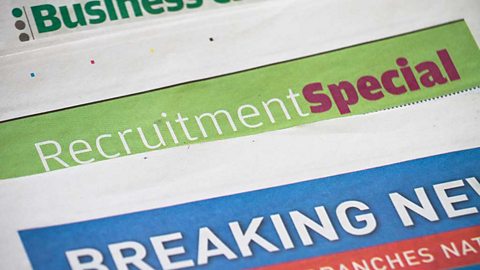Fonts and typefaces
Fonts
A typefaceA design of lettering, which is made up of a set of related fonts is the overall lettering design, and a fontA specific version of a particular typeface - eg bold or italic is a specific version of a typeface. For instance, Arial is a typeface, but Arial Bold and Arial Italic are both fonts.

Bold type can add an emphasis or strength to a font.
Underlined type can be used for titles or to draw attention to important text.
Italic type can emphasise an important word or passage of text or for designs where there is a need to create an illusion of speed and energy.
Typefaces
Typeface means a тАШfamilyтАЩ of fonts. Word processors give them names, eg Arial, Chiller, Times New Roman.
Click through the slideshow to see a range of typefaces:

Image caption, This typeface uses circles and semicircles in much of the lettering.
Image caption, This typeface forms the lettering from horizontal lines, with a shadow effect added.
Image caption, This typeface is inspired by balloons
Image caption, This typeface uses a speckled effect on the lettering, giving the impression of a fading window sticker.
Image caption, This typeface uses lettering is made of very small squares, inspired by old newsprinting techniques.
1 of 5
Serif and sans serif
Most typefaces can be categorised as either serif or sans serif. This describes whether or not letters have extended corners, known as serifs.


Serifs are the extended corners at the end of letters. Serif fonts look more elegant and traditional, and were commonly used in Roman stone carvings.

Sans serif means without serifs. These are more (legible) and are used for large blocks of text.
Decorative letter effects
Letter forms can be added to with decorative effects тАУ these add style to the letters, but arenтАЩt always needed for them to be legible. Click through the slideshow to see some decorative effects:

Image caption, Swashes are swirls that make lettering look more elaborate.
Image caption, A flourish is a longer and more ornamental swash.
Image caption, Ligatures connect letter forms together such as here in the letters "ct" and "ri"
Image caption, Highlighting adds a 3D effect and makes letters appear shiny.
Image caption, A drop shadow will make letters appear 3D
1 of 5
Styles of lettering
There are many different styles of lettering though many of them will fall under one of four categories. Click through the slideshow to see some of these categories:

Image caption, Roman style typefaces often have thick and thin stems and serifs.
Image caption, Poster style typefaces tend to be sans-serif and have even thickness in the letters. They are striking and easy to read.
Image caption, Script style typefaces are made up with connected letters like you would see in joined-up handwriting. Script style is decorative and elegant.
1 of 3
The final category is copyright style - these are typefaces that are designed for and strongly associated with a particular company or brand.